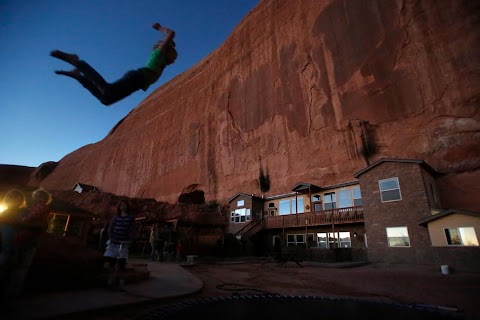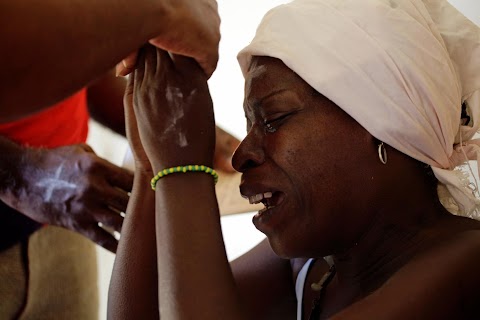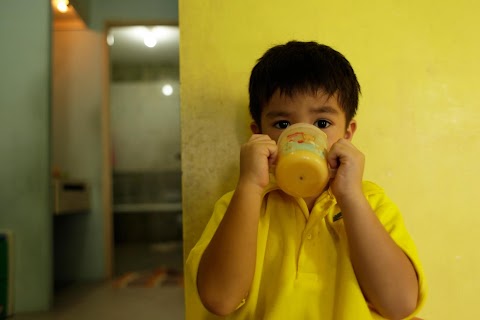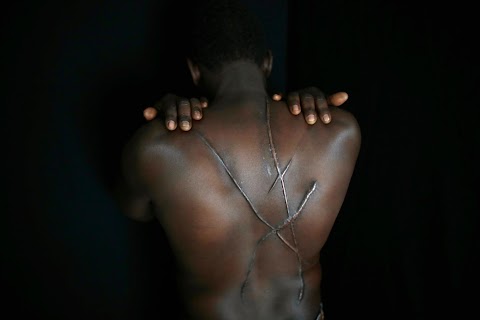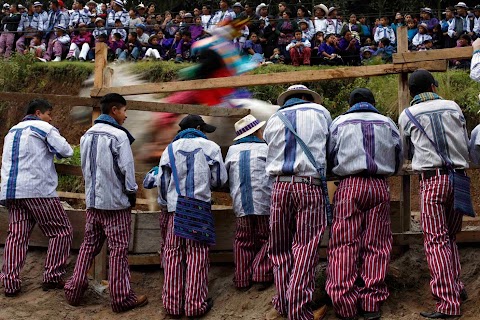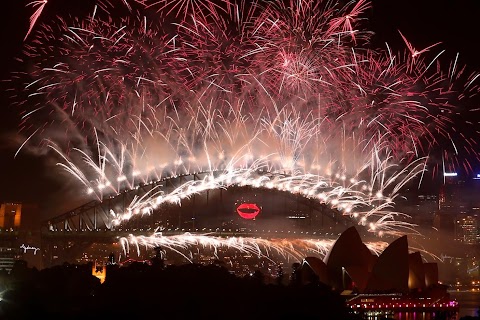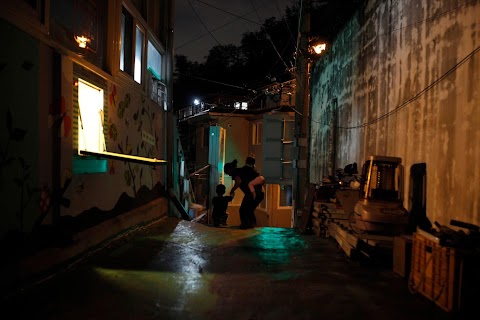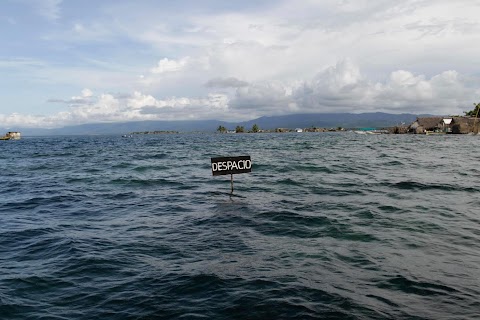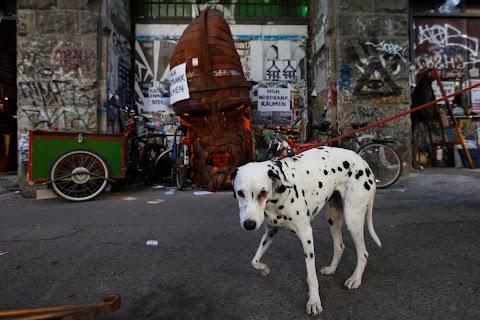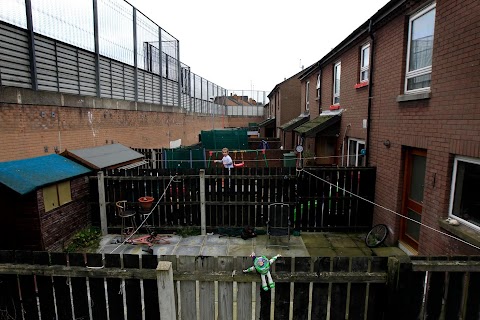
A barrier to peace
 Cathal McNaughton
Cathal McNaughton
So-called “peace walls” have separated Catholic and Protestant communities in Belfast since 1969. Built after the sectarian riots that marked the start of "The Troubles", these barriers were meant to be temporary structures, but rather than vanishing, they multiplied.
Now, long after the 1998 Good Friday Agreement that established power sharing between the two communities, the walls are still in place, and many residents like it that way.

Ordinary people live in extraordinary circumstances in parts of Belfast, with fortress-like houses hemmed in by metal fencing and barricades. Yet residents who live on either side of the wall have come to rely on its looming presence and do not want it to be taken down.
Twenty-four-year-old Roman Catholic Stephen McGarry, hanging out the laundry in the back garden of his home on Clonard Street, said: "I think there is always going to be hatred here. I wouldn’t like to see the wall come down... But mum would love to see holes in it to let the light through.”

Rather than being demolished, more high walls and fences have been erected in recent years to keep Protestant and Catholic communities apart due to ongoing sectarian tension. The “peace walls” now stretch over 13 miles.
Slideshow

A section of the peace wall wraps around houses in Cluan Place in a predominantly Protestant Loyalist area of east Belfast.

William Boyd, a 64-year-old Protestant who has lived in Cluan Place for 12 years, thinks the wall should be left the way it is. "Why would they want to pull down these walls?” he said.

A section of the wall wraps around houses in Clandeboye Gardens.

A section of the peace wall embellished with murals runs along Cupar Way in west Belfast.

Jean McAnoy, a Roman Catholic care worker whose family has lived in this house for generations, was asked if she would like to see the wall taken down. “No way. I want to keep it the way it is. If it comes down I would move,” she said.

A statue of an angel rests on the wall of a garden that backs onto the peace wall in Bombay Street, a staunchly Catholic area of west Belfast.

A section of the peace wall runs alongside houses in Clandeboye Gardens.

Another part of the barrier runs along the back of houses in Ardoyne Road.

A locked metal gate forms part of the peace wall that runs across Workman Avenue in west Belfast.

Paula McDonald, a 46-year-old Roman Catholic childminder, plays with her dog in the back garden of her home in Finn Square, where she has lived for 13 years. She said that earlier the house next door was petrol bombed, but “nothing much has happened in the last couple of years.”

Viewed through protective metal screens covering a bedroom window, a section of the peace wall runs along the back of houses in Finn Square.

A section of the peace wall runs along Cupar Way, west Belfast.

Sonya Foster, a Protestant care worker, would like to see the wall taken down one day. "Not now, but in the future maybe. It would be nice to see it down," she said.

Children play on unkempt land beside a section of the peace wall running along Glenbryn Park.

A section of the peace wall runs along Cupar Way.
"The pipe bombs, bricks and fireworks that are regularly hurled at these few houses ... are so commonplace that they are part of daily life."
“Sure, why would they want to pull down these walls?” asks William Boyd mildly, as he offers me a cup of tea at his home in Cluan Place, a predominantly Protestant Loyalist area of east Belfast.
He pulls back his net curtains to show me the towering, 20-foot-high wall topped with a fence that looms over his home, blocking out much of the natural light.
But what becomes apparent to me as William shows me around the pensioner’s bungalow where he’s lived for 12 years is that he is not expecting an answer to his question. Rather, it’s clear he has become so used to living in conditions that most people would think of as reminiscent of a prison that he finds it completely normal.
The pipe bombs, bricks and fireworks that are regularly hurled at these few houses in an otherwise quiet cul-de-sac are so commonplace that they are just part of daily life.
This is simply where all William’s friends live, this is his home and he doesn’t seem to notice the oppressive atmosphere created by the huge structures outside his bedroom window.
“The wall should be left the way it is,” he tells me. William says he likes living here and loves the sense of community that exists in Cluan Place.
On the other side of the wall I meet people who I know will never set foot in Cluan Place. As members of the Catholic nationalist community, their political views are the polar opposite of William’s.
The red, white and blue murals and Union Flags of Cluan Place are noticeably absent from Bombay Street where Jean McAnoy lives.
This is a staunchly Catholic area of west Belfast where intense riots in the late 1960s sparked the deployment of the British army in Northern Ireland.
And so to protect the residents, the barriers were erected and 40 years later they’re still here - meaning that the view out of William and Jean’s windows are practically identical.
Jean lives in what I can only describe as a cage. Not only does she have walls and metal fencing surrounding her house, there is thick wire mesh forming a roof over her back garden too.
But Jean is used to living like this. She has lived all her life on this street. Her grandfather was burnt out of his house back in the 1960s, but she says she’ll never move.
“The walls should be left the way they are,” says Jean echoing the words of William, although I suspect they will never discuss the issue over a cup of tea. And that’s a shame because I think they would get on well together - heated debates on politics aside.
But there’s the problem: until people living on either side of these walls are able to actually see each other going about their daily lives, I think they will continue to think they are very different.
They aren’t so different really. The flags on the streets are different colours, but the residents share the same set of values and both place great importance on community spirit and family.
Still, as long as the walls remain there will always be mistrust of the “people from the other side”.
